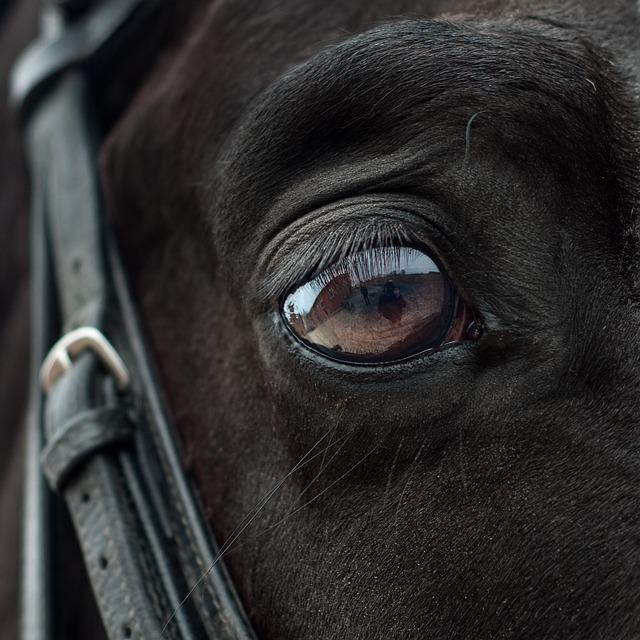Horse ownership is a rewarding hobby that will keep you active and let you make the most of the great outdoors. But it’s no secret that horses are expensive animals to keep, and there are also a lot of less obvious costs associated with owning these magnificent animals. The cost of the horse itself is simply the start – there are many recurring costs that you’ll need to cover every few weeks, so in this article we’ve broken down the main costs that you can expect when buying and keeping a horse, and how to plan for them.
Purchasing Your Horse
When you’re buying your horse, you’ll need to work out how much you can afford for this outright cost – depending on the type of horse you buy, this will typically be in the thousands. If you’re searching for a more experienced schoolmaster, expect to pay a hefty (but worthwhile) lump sum. You’ll also need to factor in other costs involved with the purchase, including travel and accommodation expenses for viewing horses that are far from your home, and a pre-purchase vetting for any horse that you want to go ahead and buy.
A vetting is a key part of a horse purchase, as it will identify any potential medical issues that your new horse may have that you should be aware of. Once you’ve bought your horse, you’ll need to ensure that you have appropriate transport to move him or her to your own yard, so if you don’t have access to a lorry or trailer, you can hire a professional to pick them up and make the journey for you.

Keeping Your Horse on a Livery Yard
Once you’ve found the perfect horse, the next step is to decide where you’re going to keep them. If you aren’t fortunate enough to have your own land, then you can keep your horse on a livery yard. When choosing a suitable livery yard, there are a few considerations to make. Firstly, understand exactly what is included in the cost, as yards offer different packages to suit individual liveries. For instance, you can choose a DIY livery package, which will be one of the lower cost options, and this will usually include a stable and turn out facility for your horse, but you will need to visit twice a day to provide care.
If you opt for a Part or Full livery package, yard staff will assist you with basic care such as feeding and turnout out in the morning, mucking out during the day or bringing in each evening. Although this comes at a higher price point, it can save you time during the week if you work a demanding job or have other commitments.
When viewing a potential livery yard to keep your horse on, it’s important to check the rules around using your own suppliers for things like feed and bedding, so that you can plan your finances accordingly – some livery yard owners will only allow you to purchase hay from their fields, or from a specific supplier that they have a business relationship with, so if you’re looking for more flexibility around your budget then this might not be a suitable set up for you. If you don’t mind using a yard’s supplier, make sure that you check the hay, feed and bedding on site to make sure that it’s of a high quality.
Basic Upkeep Costs
Once you’ve found the right horse and decided where you’re going to keep them, there will be recurring costs that crop up on a weekly or monthly basis to meet their basic care needs, including:
- Hay
Horses are grazing animals, and their bodies have evolved to eat for between 16-18 hours a day, which means that they need a constant supply of high quality hay or haylage to be kept in good health. To keep up with the demand, you should aim to feed around 2-2.5% of your horse’s bodyweight in hay daily. This is a cost that can add up quickly, especially if hay is in short supply during some periods of the year.
- Feed
Most horses and ponies will need to consume hard feed alongside hay or haylage as part of their diet, especially if they are in ridden work. Hard feeds can range from grains like barley and oats, to chaff mixes that have been formulated to have different effects on the body such as improved energy and responsiveness or weight gain. It’s important to feed the same food regularly, and only introduce new feed types gradually, as well as provide clean, fresh water at all times.
- Bedding
Another cost to factor into horse ownership is stable bedding like straw or shavings. While you can buy durable rubber matting which can reduce the risk of knocks from a hard concrete stable floor, you’ll still need to provide your horse with a thick, comfortable bed, and with prices for straw averaging £25 per large bale, you can expect to pay this once or twice a month.
- Shoes
Every 6-8 weeks, your horse will need shoeing by a qualified, experienced farrier, to trim any hoof growth and refit their shoes. This is an absolutely vital part of appropriate horse care, so it’s important to schedule your farrier visits in advance. Depending on the work required, the price can vary, but in the UK a simple trim will set you back around £30, while a full set of all four shoes can cost upwards of £65.
- Worming
If you keep your horse on a livery yard, then most will already have established worming practices where all horses and ponies are treated at the same time, so it’s worth speaking to your yard owner to check what the current routine is. Horses need regular treatments for redworm and tapeworm to ensure that they are fit and healthy, and to reduce the risk to other horses in their fields.
- Vaccinations
Another thing to bear in mind when it comes to the cost of owning a horse is the importance of routine vaccinations against tetanus and influenza. If your horse hasn’t had its vaccinations before, or they have lapsed before a booster could be given, then you will need to get the first vaccination completed by a vet followed by a 4-6 week wait before the second. Once this is done, get the third vaccine 5-6 months later and your horse will be immunised and ready to switch to annual boosters. Your vet will be able to give you realistic pricing, but often the cost of a single vaccination visit is over £40.
Equipment
Now that you’ve got an understanding of the basic care costs for your new horse, you can start to think about riding him or her. To do this, you’ll need the right equipment, so you can use tack stores like Equi Supermarket to source reputable, high-quality products from a range of suppliers. Equi Supermarket stands out for their low prices combined with efficient delivery, which provides a reliable safety net in the busy, unpredictable world of horses.
Training and Competition Fees
With your new horse having their care needs met in a suitable livery yard, you’ll be ready to hit the ground running once you’ve bought the right kit. There are, however, some costs involved by way of training and competition fees. With horses, we are always learning and improving, so taking regular lessons with a qualified instructor is paramount to being successful with your new horse. When you’re ready, you can then enter competitions in a range of disciplines like showjumping, eventing and dressage – just remember that you’ll need to cover the cost of entry fees, travel and show gear.
Although owning a horse is an expensive hobby, it is highly rewarding and can bring you joy in so many ways, which far outweigh any financial burden. By making a financial plan that prioritises your horse’s basic care needs and the right environment, as well as purchasing your equipment from a reputable supplier, you can be confident that you have a strong understanding of all of the costs involved before taking the leap into horse ownership.





